
2C-T-7 is a psychedelic phenethylamine of the 2C family. In his book PiHKAL: A Chemical Love Story, Alexander Shulgin lists the dosage range as 10–30 mg. 2C-T-7 is generally taken orally, and produces psychedelic and entactogenic effects that last 8 to 15 hours. Up until Operation Web Tryp and three deaths, two of which involved the use of other drugs in addition to 2C-T-7, and one which involved an excessive insufflated dose, 2C-T-7 was sold commercially in Dutch and Japanese smartshops and online. It is known on the streets as Blue Mystic or 7th Heaven. There has been little real research done on this chemical other than Shulgin's comments in PiHKAL and a few small animal studies mostly aimed at detecting metabolites.
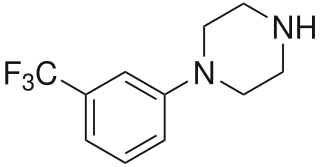
3-Trifluoromethylphenylpiperazine (TFMPP) is a recreational drug of the phenylpiperazine chemical class and is a substituted piperazine. Usually in combination with benzylpiperazine (BZP) and other analogues, it is sold as an alternative to the illicit drug MDMA ("Ecstasy").
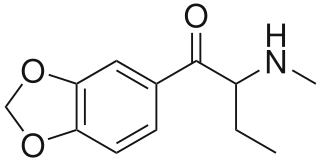
Butylone, also known as β-keto-N-methylbenzodioxolylbutanamine (βk-MBDB), is an entactogen, psychedelic, and stimulant psychoactive drug of the phenethylamine chemical class. It is the β-keto analogue of MBDB and the substituted methylenedioxyphenethylamine analogue of buphedrone.
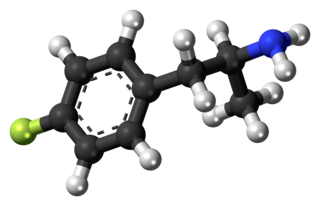
4-Fluoroamphetamine, also known as para-fluoroamphetamine (PFA) is a psychoactive research chemical of the phenethylamine and substituted amphetamine chemical classes. It produces stimulant and entactogenic effects. As a recreational drug, 4-FA is sometimes sold along with related compounds such as 2-fluoroamphetamine and 4-fluoromethamphetamine.

Ethcathinone, also known as ethylpropion or ETH-CAT, is a stimulant drug of the phenethylamine, amphetamine, and cathinone chemical classes. It is an active metabolite of the prodrug diethylcathinone and is fully responsible for its effects. Ethcathinone has been identified as an ingredient in both quasi-legal "party pills", and, along with mephedrone, has also been reported as having been sold as "ecstasy" in the Australian city of Cairns.

5-(2-Aminopropyl)-2,3-dihydrobenzofuran is a putative entactogen drug of the phenethylamine and amphetamine classes. It is an analogue of MDA where the heterocyclic 3-position oxygen from the 3,4-methylenedioxy ring has been replaced by a methylene bridge. 6-APDB is an analogue of 5-APDB where the 4-position oxygen has been replaced by a methylene bridge instead. 5-APDB was developed by a team led by David E. Nichols at Purdue University as part of their research into non-neurotoxic analogues of MDMA.

para-Chloroamphetamine (PCA), also known as 4-chloroamphetamine (4-CA), is a substituted amphetamine and monoamine releaser similar to MDMA, but with substantially higher neurotoxicity, thought to be due to the unrestrained release of both serotonin and dopamine by a metabolite. It is used as a neurotoxin by neurobiologists to selectively kill serotonergic neurons for research purposes, in the same way that 6-hydroxydopamine is used to kill dopaminergic neurons.

3',4'-Methylenedioxy-α-pyrrolidinopropiophenone (MDPPP) is a stimulant designer drug. It was sold in Germany in the late 1990s and early 2000s as an ingredient in imitation ecstasy (MDMA) pills. It shares a similar chemical structure with α-PPP and MDPV, and has been shown to have reinforcing effects in rats.

MDAI (5,6-methylenedioxy-2-aminoindane) is a drug developed in the 1990s by a team led by David E. Nichols at Purdue University. It acts as a non-neurotoxic and highly selective serotonin releasing agent (SSRA) in vitro and produces entactogen effects in humans.

2-Fluoromethamphetamine (2-FMA) is a stimulant drug of the amphetamine family which has been used as a designer drug. 2-FMA is commonly compared to lisdexamfetamine (Vyvanse), and dextroamphetamine due to its efficacy as a study or productivity aid. 2-FMA is purported to produce somewhat less euphoria than comparable amphetamines, likely due to its main mechanism of action consisting of norepinephrine reuptake inhibition.

JWH-203 (1-pentyl-3-(2-chlorophenylacetyl)indole) is an analgesic chemical from the phenylacetylindole family that acts as a cannabinoid agonist with approximately equal affinity at both the CB1 and CB2 receptors, having a Ki of 8.0 nM at CB1 and 7.0 nM at CB2. It was originally discovered by, and named after, John W. Huffman, but has subsequently been sold without his permission as an ingredient of synthetic cannabis smoking blends. Similar to the related 2'-methoxy compound JWH-250, the 2'-bromo compound JWH-249, and the 2'-methyl compound JWH-251, JWH-203 has a phenylacetyl group in place of the naphthoyl ring used in most aminoalkylindole cannabinoid compounds, and has the strongest in vitro binding affinity for the cannabinoid receptors of any compound in the phenylacetyl group.

A-834,735 is a drug developed by Abbott Laboratories that acts as a potent cannabinoid receptor full agonist at both the CB1 and CB2 receptors, with a Ki of 12 nM at CB1 and 0.21 nM at CB2. Replacing the aromatic 3-benzoyl or 3-naphthoyl group found in most indole derived cannabinoids with the 3-tetramethylcyclopropylmethanone group of A-834,735 and related compounds imparts significant selectivity for CB2, with most compounds from this group found to be highly selective CB2 agonists with little affinity for CB1. However, low nanomolar CB1 binding affinity is retained with certain heterocyclic 1-position substituents such as (N-methylpiperidin-2-yl)methyl (cf. AM-1220, AM-1248), or the (tetrahydropyran-4-yl)methyl substituent of A-834,735, resulting in compounds that still show significant affinity and efficacy at both receptors despite being CB2 selective overall.
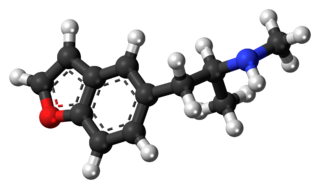
5-MAPB is an entactogenic designer drug similar to MDMA in its structure and effects.

α-Pyrrolidinohexiophenone is a synthetic stimulant drug of the cathinone class developed in the 1960s which has been reported as a novel designer drug.

α-Pyrrolidinopentiothiophenone is a synthetic stimulant of the cathinone class that has been sold online as a designer drug. It is an analogue of α-PVP where the phenyl ring has been replaced by thiophene.

4-Methylbuphedrone, is a stimulant drug of the cathinone class that has been sold online as a designer drug.

4'-Methoxy-α-pyrrolidinopentiophenone is a stimulant drug of the cathinone class that has been sold online as a designer drug.
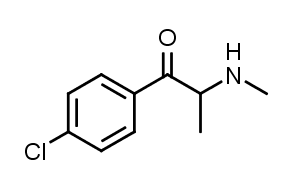
4-Chloromethcathinone is a stimulant drug of the cathinone class that has been sold online as a designer drug.

4'-Fluoro-α-pyrrolidinopentiophenone is a stimulant drug of the cathinone class which has been reported as a novel designer drug.

The substituted benzofurans are a class of chemical compounds based on the heterocyclyc and polycyclic compound benzofuran. Many medicines use the benzofuran core as a scaffold, but most commonly the term is used to refer to the simpler compounds in this class which include numerous psychoactive drugs, including stimulants, psychedelics and empathogens. In general, these compounds have a benzofuran core to which a 2-aminoethyl group is attached, and combined with a range of other substituents. Some psychoactive derivatives from this family have been sold under the name Benzofury.




















